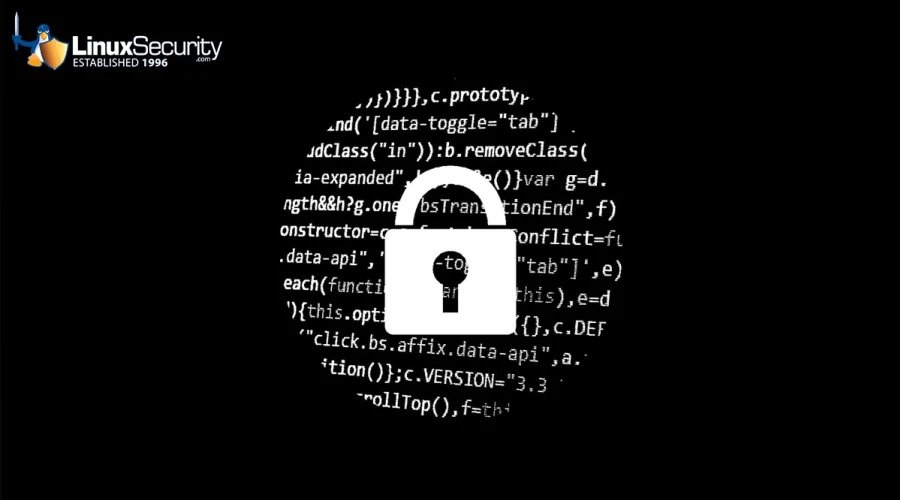BlackHat USA 2024: Key Takeaways for Linux Admins & InfoSec Pros

BlackHat USA, an annual cybersecurity conference with global attendance since 1997, is an essential forum for sharing cutting-edge security research, trends, and networking among IT and cybersecurity professionals. From its humble origins in Las Vegas in 1997 until today, this international event draws attendees from all around the globe. Security vulnerabilities are exposed, defensive strategies are articulated, and an overall pulse is taken on the digital security industry.
The 2024 BlackHat USA Conference once again provided vital topics and discussions. Focusing heavily on high-impact areas affecting Linux administrators and infosec professionals, findings presented at this year's event shed light on emerging threats and innovative countermeasures. Let's examine some of the highlights and key takeaways from BlackHat 2024 that directly impact our daily lives as Linux admins.
Key Takeaways for Linux & InfoSec Circles
From all the talks and shared research findings presented at BlackHat 2024, several key takeaways stood out for Linux administrators and infosec professionals:
AI and Security
At Black Hat USA 2024, Artificial Intelligence (AI) was a central theme, reflecting its growing significance within cybersecurity. Experts at the event discussed AI as an asset to boost security measures and an incursion into new risk categories. NVIDIA's AI Red Team recently identified sophisticated threats to large language models (LLMs), including indirect prompt injections and vulnerable plugins, that require strong application security measures to address. This highlights the significance of investing in robust application security as an essential means to mitigate such risks. On the  positive side, experts saw GenAI and LLMs as transformative tools capable of synthesizing vast amounts of technical data and threat intelligence into more accessible formats for human analysis. Concerns were expressed over distinguishing practical AI applications from gimmicks. Skepticism regarding some companies' claims of AI innovation was voiced, as was caution regarding integration without fully comprehending its capabilities and implications in product environments.
positive side, experts saw GenAI and LLMs as transformative tools capable of synthesizing vast amounts of technical data and threat intelligence into more accessible formats for human analysis. Concerns were expressed over distinguishing practical AI applications from gimmicks. Skepticism regarding some companies' claims of AI innovation was voiced, as was caution regarding integration without fully comprehending its capabilities and implications in product environments.
The conference revealed a dire outlook on the dark side of AI in cybersecurity, where AI-driven attacks aren't just possible - they're rapidly becoming a reality. According to HiddenLayer's AI Threat Landscape report, as businesses become more dependent upon Artificial Intelligence systems, threat actors have developed methods of exploiting it through data poisoning, model theft, and model evasion attacks, with more hostile exploits likely as enterprise adoption increases. It is, therefore, imperative for companies to remain agile and update their security strategies to combat AI-targeted threats effectively.
Microsoft Outages and Patches
Black Hat USA 2024 showcased critical discussions surrounding Microsoft vulnerabilities and security patches, revealing growing anxiety among cybersecurity professionals regarding Microsoft's software ecosystem. At this event, held against a backdrop of global geopolitical unrest and increasing reliance on Artificial Intelligence (AI), two global outages from Microsoft/CrowdStrike services were brought to light: Azure outages and those for Microsoft/CrowdStrike products. These incidents underscored the potential security ramifications of vulnerabilities within Microsoft's framework, drawing attention to its response approach. Particularly noteworthy was th e discovery of an advanced attack technique at this conference where threat actors could use zero-day vulnerabilities to perform downgrade attacks on fully updated Windows systems. Attackers could leverage this technique to reintroduce vulnerabilities patched using standard security tools, expose critical OS components, and exploit outdated DLLs and the NT Kernel without detection by standard tools.
e discovery of an advanced attack technique at this conference where threat actors could use zero-day vulnerabilities to perform downgrade attacks on fully updated Windows systems. Attackers could leverage this technique to reintroduce vulnerabilities patched using standard security tools, expose critical OS components, and exploit outdated DLLs and the NT Kernel without detection by standard tools.
Black Hat 2024 also focused on Microsoft's response to these challenges, unveiling advisories on two unpatched zero-days, CVE-2024-38202 and CVE-2024-21302, and offering mitigation advice pending more definitive patches. This move formed part of a broader critique against Microsoft's security posture, including ongoing concerns that the company tends to patch vulnerabilities identified by friendly researchers rather than actively redesigning programs to prevent new attacks. Critiques have arisen amid discussions of Microsoft's security responsibilities amid numerous vulnerabilities involving high-profile systems and data. Microsoft has pledged to tie security performance reviews directly with salary reviews to address vulnerabilities in its security framework in response to an ever-evolving threat landscape.
Crash Reports and Core Dumps
One of the more surprising but critical revelations at BlackHat USA 2024 was that log files, crash reports, and core dumps provide attackers with tools for creating denial-of-service attacks or more sophisticated system exploits. Likewise, security researchers use crash reports to detect malware payloads that often go unidentified by signature detection. Core dumps are files produced when programs crash and contain an exact snapshot of their state - often including sensitive information like passwords or encryption keys—making these reports a wake-up call to both Linux admins and developers to treat them with increased care.
Detailed Insights from the Crash Report Analysis
BlackHat presenters shed new light on the unintentional role of crash reports and core dumps in aiding attackers, forcing security professionals to recognize a need for a two-pronged approach: safeguarding them while using them to enhance security measures proactively.
Attackers See Core Dumps As A Gold Mine
Core dumps and error logs offer malicious entities an invaluable roadmap into a program's fault lines, providing an insight into its inner workings - how memory, user credentials, or transactions are managed or processed by it - providing data that could aid exploit development or identify weak points within an active system.
Proactive Measures With Core Dumps
However, from a defensive standpoint, these resources can prove invaluable. By carefully examining core dumps, security professionals and Linux system administrators can preemptively detect vulnerabilities within their systems' codebases - often by employing tools like GNU Debugger (GDB), which enables examination of core dump contents to determine what caused a crash and identify root cause analysis solutions.
Linux systems, being open-source platforms, offer numerous configuration options for managing core dumps. System administrators can configure whether and how often core dumps should be generated and their size and handling policies via kernel parameters like /proc/sys/kernel/core_pattern or user configuration options such as the ulimit command. Furthermore, Linux's robust logging systems can be easily customized depending on their environment's sensitivity or security needs.
Configuring core dump handling on Linux goes beyond diagnostics. The task involves setting resource limits using ulimit, specifying core file size using core_file_size, and configuring kernel.core_uses_pid accordingly. For instance, one might store core dumps securely yet centrally so they are accessible for analysis by authorized personnel without being vulnerable to potential intruders.
Furthermore, advanced platforms like Red Hat's OpenShift contain mechanisms for collecting core dumps within containers. This feature can be particularly helpful in diagnosing issues in microservice architecture where traditional core dump analysis methods might not apply directly.
Why Are Future Proofing & Security Hygiene of Utmost Importance?
BlackHat USA 2024 revealed that as systems become more complex, risks increase. Linux administrators and information security professionals must regularly reevaluate their security postures, incorporating lessons from events like core dump analysis.
As core dumps can be dangerous tools, it is critical to implement stringent access controls, encrypt sensitive data at rest, and continuously monitor for unusual behaviors that might signal the need for deeper investigation of system stability and security.
Linux community members should take advantage of the robust and granular control available to enhance system security reactively (post-incident analysis) and proactively by including core dump analysis as part of regular security practices.
Our Final Thoughts on BlackHat USA 2024
BlackHat USA 2024 lived up to its longstanding legacy by providing valuable knowledge and trends resonating with Linux administrators and the larger infosec community. Its emphasis on emerging technological applications and ongoing efforts against vulnerabilities showcased cybersecurity's dynamic, ever-evolving nature. With these insights gained at BlackHat 2024, Linux professionals are better prepared than ever to navigate this ever-evolving security landscape, maintaining the integrity and trustworthiness of systems under their purview.













